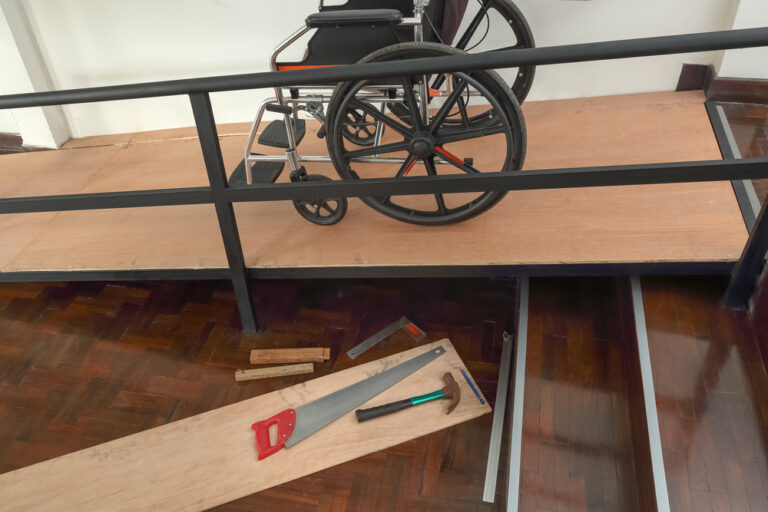We’re all getting older. If we’re lucky, we’ll live to be very elderly. Because everyone ages, you’d think that it was commonplace to take measures to securing our independence in our later years. Instead, the majority of us take our physical abilities for granted. We walk up and down the stairs each and every day without a care in the world. At no point do we think “one of these days, these stairs won’t be so easy to climb.”
That is unless we live with elderly loved ones who have mobility issues. In most cases, people begin making renovations to their homes when their aging parents require additional help getting around. But why don’t we begin thinking about accessibility earlier? Again, we’re all aging, right?
Wouldn’t it make sense to make accessible homes the norm?
Brian Cyr sure thinks so. The real estate agent from St. Albert, Alberta is making the case for homes to provide persons with disabilities much greater access. As reported by Fakiha Baig of Global News, Cyr believes that wider doors and lower kitchen counters in a home can make a monumental difference. He learned this while selling a modified luxury bungalow.
In the article, Cyr admits that, during his 15-year career, he has never seen a home designed for people with disabilities. His recent sale is a home that has spacious hallways, widened door frames, no island in the kitchen, low counters and even a dumb waiter to transport items to the basement. The home’s new owner, Brad Bartko is thrilled about it all. The 28 year-old has been in a wheelchair for his entire life.
“We live in a world that’s not built for us.”
“We live in a world that’s not built for us…that’s not designed for people with disabilities,” Bartko told Global News, “Seeing this house gave me hope and I knew it would give people in the community hope that houses like this do exist.” Bartko’s new house is also equipped with ramps instead of stairs and two elevators. One connects the garage to the main floor of the house.
“In the basement, a bar with a lower counter makes it easier for someone with a disability to serve drinks to guests,” details Baig, “There’s also a lowered pool table to entertain them. One of the three bedrooms is also in the basement. It’s meant for a caregiver and has built-in speakers in the walls.”
What can you do to make your home more accessible?
At LifeCare Mobility Solutions, we recognize that traditional home models aren’t exactly designed for the disabled. This is why we so often champion the installation of stair lifts in homes with people with disabilities. A home stair lift is a motorized chair that slowly and safely glides up and down a set of stairs affixed to a metal rail that is mounted to the stair treads.
Stair lifts can be mounted on either straight or curved staircases, making it easy to access other levels of your home with any type of stair design. If you have any questions about the stair lifts offered by LifeCare Mobility Solutions, please don’t hesitate to call us at 416-267-9800 or email us at info@lifecaremobility.ca. You may also contact us by filling out the form on our Contact page!










